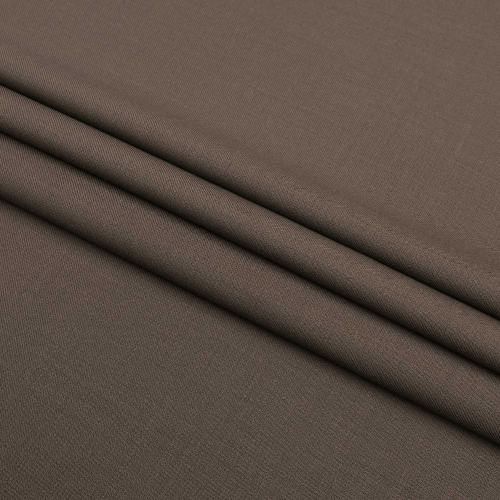The Natural Insulation Power of Pure Wool Fibers
When temperatures drop and winter winds howl, the age-old question of staying warm becomes paramount. Pure wool has served humanity as a protective barrier against harsh weather for thousands of years. From ancient shepherds to modern outdoor enthusiasts, this remarkable natural fiber continues to prove its worth as one of nature's most effective insulators.
Pure wool's unique molecular structure and physical properties create an unparalleled ability to regulate body temperature while providing exceptional warmth. The natural crimp and scales in wool fibers trap air pockets, creating a thermal barrier that maintains body heat even in the coldest conditions.
Understanding Wool's Thermal Properties
The Science Behind Wool's Warmth
Pure wool's exceptional insulating capabilities stem from its complex fiber structure. Each wool fiber contains millions of microscopic air pockets that trap warmth close to the body. These air pockets work alongside the natural crimp of wool fibers to create a three-dimensional insulating layer that maintains a consistent microclimate around the wearer.
The protein molecules in pure wool also contribute to its warming properties through a process called heat of sorption. When moisture from the body or environment contacts wool fibers, a small amount of heat is generated, providing additional warmth. This natural process helps explain why wool garments feel warm even when damp.
Moisture Management Excellence
One of pure wool's most remarkable features is its ability to manage moisture while maintaining warmth. The fiber can absorb up to 30% of its weight in moisture without feeling wet, wicking perspiration away from the skin while retaining its insulating properties. This moisture management system helps prevent the chilling effect that occurs when sweat accumulates next to the skin.
Unlike synthetic materials that can become cold and clammy when wet, pure wool continues to generate warmth through its natural chemical processes. This makes it particularly valuable for outdoor activities where maintaining body temperature despite changing conditions is crucial.
Performance Benefits of Pure Wool Garments
Temperature Regulation Capabilities
Pure wool excels at maintaining optimal body temperature across varying conditions. Its natural temperature-regulating properties help prevent overheating during activity while providing reliable warmth during rest periods. This adaptability makes wool garments ideal for layering systems in cold weather activities.
The fiber's ability to respond to body temperature changes happens automatically, requiring no special care or attention from the wearer. When body temperature rises, wool moves excess heat and moisture away from the skin. When temperature drops, the trapped air within the fiber structure provides crucial insulation.
Durability and Longevity
Pure wool garments offer exceptional durability compared to many other natural and synthetic materials. The natural elasticity of wool fibers allows them to stretch up to 30% without breaking and return to their original shape. This resilience means wool garments maintain their insulating properties and appearance even after extended use.
The natural protective coating on wool fibers, called lanolin, provides additional benefits. It helps repel water and stains while contributing to the material's longevity. With proper care, pure wool garments can provide reliable warmth for many years, making them a sustainable choice for cold weather clothing.
Selecting Pure Wool for Cold Weather
Weight and Weave Considerations
The effectiveness of pure wool in cold weather depends significantly on the weight and weave of the fabric. Lightweight merino wool provides excellent base layer insulation, while medium-weight wool serves well in mid-layers. Heavy wool weaves create robust outer layers perfect for extreme cold conditions.
The type of weave affects both warmth and durability. Tightly woven wool fabrics offer superior wind resistance and durability, while looser weaves provide maximum insulation through increased air trapping. Understanding these variations helps in selecting the most appropriate wool garments for specific cold weather needs.
Quality and Processing Factors
The quality of pure wool significantly impacts its warming capabilities. Factors such as fiber diameter, length, and processing methods all influence the final performance of wool garments. Premium wool fibers are typically finer, longer, and processed using methods that preserve their natural properties.
Modern wool processing techniques can enhance the natural benefits of the fiber while addressing traditional drawbacks. Superwash treatments reduce shrinkage concerns, while special finishes can increase water repellency without compromising wool's natural breathing properties.
Frequently Asked Questions
How Does Pure Wool Compare to Synthetic Insulation?
Pure wool offers several advantages over synthetic insulation, including superior moisture management, natural temperature regulation, and better odor resistance. While synthetics may be lighter and dry more quickly, wool provides better insulation when damp and maintains its warming properties over a longer lifespan.
Can Pure Wool Be Used Year-Round?
Yes, pure wool's natural temperature-regulating properties make it suitable for year-round use. Fine merino wool is particularly versatile, keeping wearers warm in winter and cool in summer through effective moisture management and breathability.
What's the Best Way to Care for Pure Wool Garments?
To maintain pure wool's warming properties, wash garments in cool water using wool-specific detergent. Avoid high heat when drying, and store items flat or hung properly to maintain their shape. Regular gentle care will ensure wool garments continue providing optimal warmth for many seasons.

